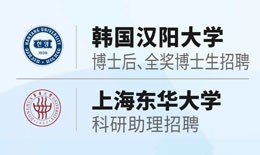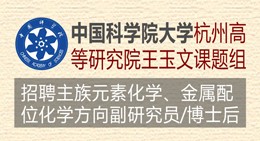-
Life cycle analyses of a composite towbar realized via filament winding and comparison with traditional metallic alternatives Sustain. Mater. Technol. (IF 9.6) Pub Date : 2024-05-15 Bianchi Iacopo, Mignanelli Chiara, Simoncini Michela, Verdini Tommaso
-
A bionic strong nanostructured soy protein-based adhesive enabled antistatic and self-extinguishing wood-based composites Sustain. Mater. Technol. (IF 9.6) Pub Date : 2024-05-14 Xin Zhang, Tao Liu, Zheng Liu, Xiaobo Zhu, Chun Long, Jianzhang Li, Qiang Gao, Jingchao Li, Pingan Song
Wood composites represent one kind of sustainable functional materials for interior decoration and packaging, but their tendency to generate static electricity poses discomfort and potential fire hazards. To address this huge challenge, we herein report a strong, conductive, nanostructured formaldehyde-free soy protein-based adhesive by mixing nanocellulose and tannic acid functionalized MXene, and
-
Metal-organic framework cobalt gallate derived high-voltage carbon coated lithium cobalt oxide cathode and porous carbon supported cobalt oxide anode materials for superior lithium-ion storage Sustain. Mater. Technol. (IF 9.6) Pub Date : 2024-05-14 Ruixin Jia, Longbiao Yu, Hui Zeng, Chao Wang, Hongliang Li, Binghui Xu
-
A highly efficient clean hydrometallurgy process for gold leaching in a Fenton oxidation assisted thiourea system Sustain. Mater. Technol. (IF 9.6) Pub Date : 2024-05-14 Lei Hou, Alejandro López Valdivieso, Yu Chen, Peng Chen, Nasriddinov Zamoniddin Zainiddinovich, Chunhui Wu, Shaoxian Song, Feifei Jia
-
Elevating the prospects of green hydrogen (H2) production through solar-powered water splitting devices: A systematic review Sustain. Mater. Technol. (IF 9.6) Pub Date : 2024-05-13 Wen Cai Ng, Chong Siang Yaw, Siti Nur Amira Shaffee, Nur Azimah Abd Samad, Zi Kang Koi, Meng Nan Chong
-
A medium-entropy engineered double perovskite oxide for efficient and CO2-tolerant cathode of solid oxide fuel cells Sustain. Mater. Technol. (IF 9.6) Pub Date : 2024-05-13 Zhe Wang, Jingwei Li, Mengke Yuan, Juntao Gao, Hongru Hao, Abdalla M. Abdalla, Lingling Xu, Zhe Lv, Bo Wei
Developing highly active and robust cathodes remains challenging for solid oxide fuel cells (SOFCs). Therefore, we report an A-site medium-entropy double perovskite oxide PrBaSrCaCeCoO (PBSCCC) and its electrocatalytic activity and CO tolerance property are systematically probed. The PBSCCC cathode exhibits excellent oxygen reduction reaction (ORR) activity with a low polarization resistance of 0.027 Ω cm
-
3D printed electret as self-powered wearable sensor and futuristic implementation for on-spot bone injury Sustain. Mater. Technol. (IF 9.6) Pub Date : 2024-05-12 Dalip Saini, Dipankar Mandal
-
Antimicrobial and antioxidant activities of lignin by-product from sugarcane leaf conversion to levulinic acid and hydrochar Sustain. Mater. Technol. (IF 9.6) Pub Date : 2024-05-11 Kamonwat Nakason, Parinvadee Chukaew, Fuangfa Utrarachkij, Sanchai Kuboon, Wasawat Kraithong, Skulrat Pichaiyut, Wanwitoo Wanmolee, Bunyarit Panyapinyopol
-
Recent advances in silicon nanomaterials for lithium-ion batteries: Synthesis approaches, emerging trends, challenges, and opportunities Sustain. Mater. Technol. (IF 9.6) Pub Date : 2024-05-09 M.A. Motalib Hossain, Sieh Kiong Tiong, M.A. Hannan, Pin Jern Ker, I.M.R. Fattah, T.M. Indra Mahlia
Lithium-ion batteries (LIBs) are essential for powering a wide range of current devices, including portable electronics and electric vehicles, because they have a high energy density, can be recharged, and are versatile. Silicon (Si)-based materials are being extensively studied as very promising anode compounds for future LIBs due to their moderate operating potential, high theoretical mass-specific
-
Innovative green intense tetra-eutectic solvent (ITES) for recovery via occlusion co-precipitation at room temperature Sustain. Mater. Technol. (IF 9.6) Pub Date : 2024-05-08 Md Mofasserul Alam, Haijian Huang, Zeheng Yang, Lei Zou, Ziwei Chi, Weixin Zhang
-
N-doped carbon nanotube arrays Encapsuled with cobalt‑nickel alloy as superior free-standing electrodes for ultrahigh-rate hydrogen peroxide production Sustain. Mater. Technol. (IF 9.6) Pub Date : 2024-05-08 Ye Zeng, Zhiyuan Sang, Xiaoqing Liu, Wei Peng, De'an Yang, Feng Hou, Ji Liang
-
Hydrogel-based flexible degradable triboelectric nanogenerators for human activity recognition Sustain. Mater. Technol. (IF 9.6) Pub Date : 2024-05-08 Zhenning Xie, Yanping Dai, Yuzhang Wen, Mengqi Zhang, Mingxi Tu, Fengxin Sun, Zida An, Tianming Zhao, Bing Liu, Yupeng Mao
-
Strengthening bio-circularity by reinforcing waste derived triphasic calcium phosphate to fabricate alumina toughened zirconia biocomposite with enhanced bioactivity Sustain. Mater. Technol. (IF 9.6) Pub Date : 2024-05-07 Ashutosh Gupta, Vaibhav Pandey, Manas Ranjan Majhi
Animal waste bone (AWB) is a significant component of food waste, generating millions of metric tons annually and posing environmental and economic challenges due to improper management. Despite its rich bioactive compound content, AWB is underutilized. To address these issues, we propose incorporating waste-derived calcium phosphate phases from AWB into an alumina toughened zirconia (ATZ) composite
-
Emerging trends of ferrite-based nanomaterials as photocatalysts for environmental remediation: A review and synthetic perspective Sustain. Mater. Technol. (IF 9.6) Pub Date : 2024-05-07 Bayan Alqassem, Fawzi Banat, Giovanni Palmisano, Mohammad Abu Haija
Efficient wastewater treatment processes are in high demand for removing organic and inorganic pollutants. Photocatalysis, as an environmentally friendly technology, has shown significant progress in the treatment of contaminated wastewater. This review explores the potential of spinel ferrite-based nanomaterials as efficient photocatalysts for wastewater treatment. To enhance their properties, ferrites
-
Improved rate and cycling capability of V2O5@MoS2 nanocomposites as an advanced cathode material for rechargeable aqueous zinc-ion batteries Sustain. Mater. Technol. (IF 9.6) Pub Date : 2024-05-07 Wasim Akram Syed, Ashok Kumar Kakarla, Hari Bandi, R. Shanthappa, Jae Su Yu
-
Preparation of high-performance bitumen carbon-based microwave absorbing materials from different coal bitumens toward efficient treatment of industrial waste bitumen Sustain. Mater. Technol. (IF 9.6) Pub Date : 2024-05-07 Xinyu Guo, Zhihong Wu, Jijin Chang, Dan Niu, Anwen Ren, Yifan Xu, Jiayi Li, Jun Qi, Jincui Ren
-
Laser-induced graphene formation on different wood species: Dependence of electronic performance on intrinsic features of certain types of wood Sustain. Mater. Technol. (IF 9.6) Pub Date : 2024-05-04 Sabine K. Lengger, Lukas Neumaier, Lukas Haiden, Michael Feuchter, Thomas Griesser, Jürgen Kosel
-
Recent laser advances in graphene-based planar micro-supercapacitors: Challenges and future prospects Sustain. Mater. Technol. (IF 9.6) Pub Date : 2024-05-03 Niraj Kumar, Prasanta Kumar Sahoo, Seul-Yi Lee, Soo-Jin Park
This review focuses on the advancements in, and potential of graphene-based planar micro-supercapacitors (G-MSCs) fabricated through laser patterning. This study provides a comprehensive understanding of the current state of research on G-MSCs, including fabrication techniques, materials, design techniques, and optimization methods, to achieve superior energy storage capabilities. Laser patterning
-
Sustainable concrete design using waste latex paint Sustain. Mater. Technol. (IF 9.6) Pub Date : 2024-04-30 Shima Taheri, Xia Zhong, Simon M. Clark, Bijan Samali, Nariman Saeed
-
Recycling and utilization of paper sludge ash -current status review and future perspectives Sustain. Mater. Technol. (IF 9.6) Pub Date : 2024-04-30 Zahraa Jwaida, Anmar Dulaimi, Wajde Alyhya, Hayder Algretawee, Shakir Al-Busaltan
-
Unlocking new frontiers: Boosting up electrochemical catalysis with metal clusters and single-atoms Sustain. Mater. Technol. (IF 9.6) Pub Date : 2024-04-28 Fatimah Kehinde Busari, Zaheer Ud Din Babar, Ali Raza, Gao Li
-
Three modes of electrochemical impedance spectroscopy measurements performed on vanadium redox flow battery Sustain. Mater. Technol. (IF 9.6) Pub Date : 2024-04-27 Joanna Krakowiak, Wojciech Bącalski, Grzegorz Lentka, Pekka Peljo, Paweł Ślepski
This article presents an innovative approach to monitor working redox flow batteries using dynamic electrochemical impedance spectroscopy, diverging from the commonly sequential impedance methods carried out under potentiostatic or galvanostatic conditions close to the open circle voltage. The authors introduce a fresh variation of dynamic impedance measurement that leverages an amplitude-modulated
-
Sustainable latent fingerprint enhancement with ink-free printing and shape memory behavior using Parthenium Hysterophorus-derived carbon dots Sustain. Mater. Technol. (IF 9.6) Pub Date : 2024-04-27 B.R. Radha Krushna, D.H. Sandeep, K. Manjunatha, S.C. Sharma, Maitreyee Panda, C. Krithika, Hsin-Hao Chiu, Bing-Li Lyu, Tsu-En Hsu, Ming-Kang Ho, Sheng Yun Wu, H. Nagabhushana
-
An intrinsic mechanism of surface reconstruction of cobalt-based oxide intermediated by oxygen vacancies Sustain. Mater. Technol. (IF 9.6) Pub Date : 2024-04-26 Hengbo Xiao, Hongxia Yin, Ximin Li, Xiangji Zhou, Wu Zhang, Fei Pan, Jian Zhao, Junjie Guo, Song Li, Lihua Qian
-
Cat paw-inspired magnetorheological elastomer embedded mechanical metamaterials with active sensing and switching stiffness for vibration isolator Sustain. Mater. Technol. (IF 9.6) Pub Date : 2024-04-26 Zhisen Zhu, Rui Wei, Hui Zhang, Wenling Zhang
-
Water-based and tannin-assisted liquid-phase exfoliation for a sustainable production of graphene Sustain. Mater. Technol. (IF 9.6) Pub Date : 2024-04-26 María Lozano-Chico, Borja Fernández-d'Arlas, Miren Matias-Alkaiaga, Arantxa Eceiza, Maider Iturrondobeitia, Lorena Ugarte
Graphene is a material with high potential in the development of advanced applications, such as 3D printing. In the current scenario, it is obvious that technological progress should align with sustainability, therefore, it is necessary to search for efficient and sustainable alternatives to the liquid phase exfoliation of graphene. In this work, chestnut tannins were employed as surfactants for graphene
-
Towards sustainable manufacturing: A comprehensive analysis of circular economy key performance indicators in the manufacturing industry Sustain. Mater. Technol. (IF 9.6) Pub Date : 2024-04-26 Dina Aljamal, Amr Salem, Navneet Khanna, Hussien Hegab
In the pursuit of sustainable development, the concept of Circular Economy (CE) has emerged as a transformative alternative to the traditional linear economic model characterized by take, make, use, and dispose practices. However, there is a growing recognition of the limitations of the linear economy in addressing contemporary global challenges, leading to a pressing need for a more regenerative approach
-
Sensors, society, and sustainability Sustain. Mater. Technol. (IF 9.6) Pub Date : 2024-04-26 Vishal Chaudhary, Paras Gaur, Sarvesh Rustagi
-
A review of the use of cryogenic coolant during machining titanium alloys Sustain. Mater. Technol. (IF 9.6) Pub Date : 2024-04-25 Tharmalingam Sivarupan, Michael Bermingham, Chi-Ho Ng, Shoujin Sun, Matthew Dargusch
-
Flexible wood-based composite for solar water evaporation and waste heat power generation Sustain. Mater. Technol. (IF 9.6) Pub Date : 2024-04-24 Jingyu Wu, Tong Li, Qian Zhao, Xiaolu Wen, Liujun Liu, Jiufang Duan
Solar water evaporation shows great promise in the utilization of sunlight resources. However, currently available evaporators suffer from poor mechanical properties, easy leakage and failure of heat conversion materials, and single utilization pattern limit the equipment can not be widely used. In this study, a wood composite with good flexibility, efficient photothermal conversion was prepared using
-
Enhancing fire safety, electromagnetic interference shielding, and photothermal conversion performances of wearable polyamide fabrics through eco-friendly coatings Sustain. Mater. Technol. (IF 9.6) Pub Date : 2024-04-23 Jian Liu, Jingfan Zhang, Feng Chen, Xinyu Cui, Peng Qi, Hongfei Li, Xiaoyu Gu, Jun Sun, Sheng Zhang
-
Investigating dual-functional Al-doped stannic oxide nanorods towards photodegradation of real industry wastes and dye-sensitized solar cell application: An experimental and theoretical interpretation Sustain. Mater. Technol. (IF 9.6) Pub Date : 2024-04-23 S. Jayapandi, S. Premkumar, B. Murali, D. Lakshmi, S. Gracelin Juliana, Asma A. Alothman, Saikh M. Wabaidur, Mani Govindasamy, S.K. Nataraj
In this work, we demonstrate a uniquely designed Tin (IV) Oxide (SnO)-based nanomaterials for energy and environmental applications. Here, the Al-doped SnO nanorods (NR) at various concentrations ranging from 3 wt% to 9 wt% carried out following facile co-precipitation technique which induced synergic structural, optical and electrical properties in resulting products. Further, the Al-incorporation
-
Development of a sustainable geopolymer using blast furnace slag and lithium hydroxide Sustain. Mater. Technol. (IF 9.6) Pub Date : 2024-04-23 Vikash Kumar Singh, Gaurav Srivastava
Ground Granulated Blast furnace Slag (GGBS) is a promising alternative to ordinary Portland cement due to its potential to reduce emissions. However, the limited binding capability of pure GGBS necessitates the use of alkaline activators to enhance its hydration behaviour. The present work establishes the use of lithium hydroxide (LiOH), which can be synthesized by recycling lithium-ion batteries,
-
Cellulose nanocrystal filled synthetic rubber: Sustainable production, environmental assessment and end-of-life biodegradation by polyphagous pests Sustain. Mater. Technol. (IF 9.6) Pub Date : 2024-04-21 Sohail Yasin, Muhammad Hafeez, Munir Hussain, Awais Mahmood, Song Yihu, Zheng Qiang, Shabbir H. Gheewala, Xiaowei Li, Yang Li, Jianfeng Shi, Chaohua Gu
-
Alginate-coated functional wrapping paper incorporated with sulfur quantum dots and grapefruit seed extract for preservation of potato hash browns Sustain. Mater. Technol. (IF 9.6) Pub Date : 2024-04-20 Ruchir Priyadarshi, Zohreh Riahi, Jong-Whan Rhim
-
Effect of ZnO on the clinkerization and carbonation behavior of γ-C2S Sustain. Mater. Technol. (IF 9.6) Pub Date : 2024-04-20 Yan Yang, Yong Lai, Linglin Xu, Wuxiang Wang, Jingrui Fang, Qiang Yuan, Kai Wu, Zhenghong Yang
-
Considering sustainability when searching for new high entropy alloys Sustain. Mater. Technol. (IF 9.6) Pub Date : 2024-04-18 Stéphane Gorsse, Theo Langlois, Matthew R. Barnett
-
Carbon dioxide capture by direct methanation in co-electrolysis using solid oxide cell Sustain. Mater. Technol. (IF 9.6) Pub Date : 2024-04-18 Yevgeniy Naumovich, Stanisław Jagielski, Jakub Kupecki, Konrad Motylinski, Katsiaryna Martsinchyk, Anna Niemczyk, Jaroslaw Milewski
Reducing carbon emissions in the global economy's energy and industry sectors necessitates not just the implementation of innovative low-emission technologies but also the adoption of techniques for capturing and recycling CO. The Power-to-X conversion allows the path to the reuse of CO originating from fossil fuels burning and other industrial processes, hence reducing the emission of the key greenhouse
-
Emergent MXene evaporators in high-efficiency solar steam generation Sustain. Mater. Technol. (IF 9.6) Pub Date : 2024-04-18 Satheesh kumar Balu, Ruimin Xing, Shanhu Liu
-
Constructing structure-gradient silicone rubber/CNTs foam with desirable resilience and strength via green supercritical CO2 foaming of non-equilibrium gas concentration profiles Sustain. Mater. Technol. (IF 9.6) Pub Date : 2024-04-18 Wanyu Tang, Shaozhe Shi, Bo Wang, Patrick C. Lee, Nathan R.S. Chang, Yong Luo, Guangxian Li, Xia Liao
-
Realization of high-capacity coulombic efficiency in sodium alginate/carbon nanotube double network coated Si-anode for lithium-ion batteries Sustain. Mater. Technol. (IF 9.6) Pub Date : 2024-04-17 Hongtao Xia, Xiaojiang Mu, Jianhua Zhou, Wenping Liu, Guojing Wu, Feng Dang, Dongmei Zhang, Lei Miao, Haiqing Qin, Zhenjun Zhang, Xiaoxu Lei, Anjun Lu, Zuxue Mo
-
Recent advances and prospects in MOF/MXene sensors Sustain. Mater. Technol. (IF 9.6) Pub Date : 2024-04-17 Ruipeng Chen, Wei Pang, Shuang Li, Huanying Zhou, Dianpeng Han, Kang Qin, Shuyue Ren, Zhixian Gao
-
Statistical approach to describe the properties of nanoporous carbons from lignin by chemical activation Sustain. Mater. Technol. (IF 9.6) Pub Date : 2024-04-16 Sasi Kumar N, Denys Grekov, Pascaline Pré, Babu J. Alappat
Black liquor (BL), being a residue of pulp and paper industries, composed of lignin, sulphides and carbonates of alkaline metals. BL valorisation into activated carbon is one of the possible solutions to manage waste from the mentioned industry sectors. A number of studies from the literature reported the preparation of activated carbon from lignin through metallic salt and hydroxide activation. Relying
-
From ashes to porous hierarchical nanocarbon electrode: Upcycling secondary waste materials through self-catalytic chemical vapour deposition Sustain. Mater. Technol. (IF 9.6) Pub Date : 2024-04-16 Maciej J. Głowacki, Katarzyna Karpienko, Maciej S. Wróbel, Karol Szczodrowski, Chiara Giosuè, Gianni Barucca, Maria Letizia Ruello, Robert Bogdanowicz, Mattia Pierpaoli
-
Sustainable utilization of low-value lithium-ion battery wastes in cement and concrete Sustain. Mater. Technol. (IF 9.6) Pub Date : 2024-04-15 Zhiyu Luo, Fangbing Ren, Juntao Dang, Hongjian Du
-
Cellulose nanocrystal-derived carbon electrodes for sustainable potassium-ion charge storage systems Sustain. Mater. Technol. (IF 9.6) Pub Date : 2024-04-15 Irene Ojeda, Cristian B. Arenas, Raúl Calle-Gil, Soheila Ebrahimi-Koodehi, Daniel Garcia-Gimenez, María José Torralvo, Jesús Prado-Gonjal, Javier Carretero-González, Elizabeth Castillo-Martínez
-
Grain boundary reconstruction for high-performance regeneration of Ce-abundance sintered Nd-Ce-Fe-B magnet scraps Sustain. Mater. Technol. (IF 9.6) Pub Date : 2024-04-10 Yi Huang, Qingmei Lu, Xuyuan Huang, Shuhan Dong, Youhao Liu, XiaoFei Yi, Jie Song, Zhibo Zhao, Ming Yue
In this study, we focus on the short-process regeneration of high-Ce content sintered Nd-Ce-Fe-B magnet scraps, aiming to enhance the coercivity and overall magnetic properties through the reconstruction of grain boundaries (GBs) based on the analysis of rare earth (RE) loss and proportions at each stage of the regeneration process. CeH, (NdPr)H and their mixtures were added as intergranular additives
-
Biomimetic soft-legged robotic locomotion, interactions and transitions in terrestrial, aquatic and multiple environments Sustain. Mater. Technol. (IF 9.6) Pub Date : 2024-04-10 Zhilin Yu, Alin Duan, Zhisen Zhu, Wenling Zhang
In the field of mobile robots, legged robots have unique advantages including strong terrain adaptability, good obstacle-crossing performance, and high mobility. With the development of soft materials, soft-legged robots have become more flexible and compliant, exhibiting better adaptation to the environment. Current research focuses on utilizing the flexibility of soft-legged robots to adapt them
-
PVC waste-derived nanofiber: Simple fabrication with high potential performance for PM removal in air filtration Sustain. Mater. Technol. (IF 9.6) Pub Date : 2024-04-10 Ratih Amalia, Alfian Noviyanto, Lara Ardhia Rahma, Merita, Arniati Labanni, Muhammad Fahroji, Swasmi Purwajanti, Dian Ahmad Hapidin, Akmal Zulfi
The utilization of polymer waste in nanofiber membranes is still limited. This study successfully fabricated nanofiber membranes for air filtration using polyvinyl chloride (PVC) waste through electrospinning. The feed solution properties were observed by measuring viscosity and conductivity parameters at varying concentrations of PVC 10–30%, which, indeed, the concentration of PVC greatly affects
-
3D-honeycomb architectures evaporator toward mutual reinforcement of evaporation and catalysis for efficient freshwater harvesting Sustain. Mater. Technol. (IF 9.6) Pub Date : 2024-04-09 Yi Zhang, Peng Xiao, Jincui Gu, Wenqin Wang, Tao Chen
-
Progress in research and technological developments of phase change materials integrated photovoltaic thermal systems: The allied problems and their mitigation strategies Sustain. Mater. Technol. (IF 9.6) Pub Date : 2024-04-09 Reji Kumar Rajamony, Kalidasan B., Imtiaz Ali Lagari, Johnny Koh Siaw Paw, A.G.N. Sofiah, Subbarama Kousik Suraparaju, A.K. Pandey, M. Samykano, Manzoore Elahi M. Soudagar, T.M. Yunus Khan
-
Influence of the reaction pathway on the defect concentration of Cu2ZnSnSe4 thin film solar cells by manipulation selenization temperature ramping Sustain. Mater. Technol. (IF 9.6) Pub Date : 2024-04-04 Shou-Yi Kuo, Fang-I Lai, Kuo-Jen Lin, Jui-Fu Yang
Much effort has been expended on controlling the point defects and eliminating the double-layer structures in the CuZnSnSe (CZTSe) absorber layer of CZTSe solar cells to improve their efficiency. In this study, a sputtering technique was used to deposit CuSe and ZnSn films as CZTSe precursors; moreover, the temperature of the low-temperature annealing process was controlled to create different reaction
-
Sustainable MgO-calcined clay cementitious material: Reaction mechanism, strength development and performance enhancement via initial CO2 stirring Sustain. Mater. Technol. (IF 9.6) Pub Date : 2024-04-03 Chuanlin Hu, Kunjie Shen, Yukun Qin, Xiong Qian, Fazhou Wang
With the massive utilization of concrete and other cement-based materials worldwide, the high carbon emissions and energy consumption have become severe issues. This study proposes a sustainable cementitious material based on MgO and calcined clay and investigates its reaction mechanism and strength development by combining experimental characterizations and thermodynamic modelling. Furthermore, the
-
Remanufacturing and mechanical property restoration of post-used polypropylene-based composites based on in-situ impregnated 3D printing Sustain. Mater. Technol. (IF 9.6) Pub Date : 2024-03-28 Jiangyang Xiang, Hao Lin, Zejun Zhang, Ruijun Cai, Ping Cheng, Baoli Gong, Kui Wang, Yong Peng
A remanufacturing method of post-used PP/EPDM/talc was proposed on the base of in-situ impregnated 3D printing. Continuous ramie fiber was chosen to restore mechanical properties of post-used PP/EPDM/talc. To simulate the long-term natural exposure of materials during service process, PP/EPDM/talc was subjected to accelerated aging for three different periods. Then, continuous ramie yarns with linear
-
Carbon-captured sodium hydroxide solution for sustainable alkali-activated slag Sustain. Mater. Technol. (IF 9.6) Pub Date : 2024-03-26 Seong Ho Han, Seung Mo Kim, Yubin Jun, Tae Hoon Han, Jae Hong Kim
The escalating impact of climate change, primarily driven by greenhouse gas emissions, has prompted global efforts to achieve carbon neutrality. Ordinary Portland cement production contributes approximately 7% to global carbon dioxide (CO) emissions, necessitating innovative approaches for its sustainable production. A novel method is introduced that utilizes a sodium hydroxide (NaOH) solution captured
-
The total use of rice husk to create highly porous silicon and sulfur-doped activated carbon for the fabrication of high-performance silicon-anode lithium-ion capacitors Sustain. Mater. Technol. (IF 9.6) Pub Date : 2024-03-26 Thanapat Jorn-am, Xiao Liang, Shufeng Song, Chalathorn Chanthad, Peerasak Paoprasert
-
Optimizing construction of fern-like Co3O4@Ni3Fe-LDH p-n heterojunction for boosting photo-assisted-electronic N2 reduction into NH3 and DFT calculation Sustain. Mater. Technol. (IF 9.6) Pub Date : 2024-03-26 Lei Guo, Yan-He Chen, Li-Mei Xu, Xiao-Lu Chen, Jin-Qiu Shen, Jian-Yong Zhang, Zhen-Jiang Liu
-
What is the potential of bioCCS to deliver negative emissions in Norway? From biomass mapping to a window of negative emissions potential Sustain. Mater. Technol. (IF 9.6) Pub Date : 2024-03-22 Nikalet Everson, Michaël Becidan, Simon Roussanaly, Rahul Anantharaman, Petronelle Holt, Roger Khalil
Negative emissions have been highlighted as a key component of achieving the net-zero ambition. However, ground-up approaches are necessary to better understand the realistic potential of negative emissions technologies at the national or continental level. Such an approach was applied in the present study to understand the potential of bioenergy with carbon capture and storage to deliver negative
-
Carbon dots regulating microstructure of polyamide layer of forward osmosis membrane for anti-biofouling and unexpected dual-enhancement in water flux and salt rejection Sustain. Mater. Technol. (IF 9.6) Pub Date : 2024-03-21 Biao Zhang, Wensheng Zou, Pingping Wu, Jinhui Zhang, Weili Kong, Xia Chen, Chengli Wu, Yaqin Wang
-
The nexus of sustainability and damping: A quasi-zero stiffness and pseudo-piecewise inerter damper for vehicle suspension Sustain. Mater. Technol. (IF 9.6) Pub Date : 2024-03-19 Minyi Yi, Zheng Fang, Genshuo Liu, Zutao Zhang, Lingfei Qi, Juhuang Song, Ali Azam, Mansour Abdelrahman
This paper proposes a vibration control-energy harvesting damper (VCEHD) for vehicle suspension. The principles used in the proposed VCEHD include quasi-zero stiffness (QZS), mechanical motion rectifier (MMR), and semi-active control. In the dynamic analysis, the authors found that the inherent disengagement and engagement properties of the MMR can undermine the robustness of the system, that is, the






























 京公网安备 11010802027423号
京公网安备 11010802027423号